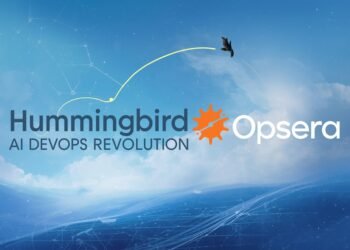Since its release in 2019, the AWS Cloud Development Kit (CDK) has become one of the most powerful ways to define cloud infrastructure using familiar programming languages like TypeScript, Python, and Java. Instead of writing endless YAML or JSON templates, developers can describe AWS resources as code constructs, making infrastructure as reusable and testable as application code.
But as adoption grew, so did complexity. Large-scale projects began running into performance bottlenecks, dependency headaches, and organizational challenges when managing sprawling stacks. AWS listened — and now, in 2025, the company has refactored the CDK from the ground up.
The result? A streamlined, extensible, and future-ready framework for cloud-native software delivery.
What’s New in the AWS CDK Refactor
The refactor isn’t just about code cleanup. It’s a strategic overhaul designed to improve performance, maintainability, and developer experience. Key highlights include:
-
Faster Synthesis and Deployment
-
Optimized compilation paths reduce the time to synthesize CloudFormation templates.
-
Large projects with hundreds of stacks now build in minutes instead of hours.
-
-
Modular Architecture
-
The monolithic core has been split into lighter modules.
-
Developers can load only the constructs they need, cutting down on bloat.
-
-
Improved Language Bindings
-
TypeScript remains first-class, but Python, Java, and C# bindings have been reworked for more consistent APIs.
-
Support for Rust and Go is in preview, signaling AWS’s commitment to multi-language ecosystems.
-
-
Enhanced Construct Hub Integration
-
The new Construct Hub makes sharing and reusing infrastructure libraries seamless.
-
Enterprises can publish internal constructs for teams to consume, fostering standardization.
-
-
Built-In Security Guardrails
-
Security scanning and policy enforcement now happen during synthesis.
-
Misconfigurations (like public S3 buckets or weak IAM roles) are flagged before deployment.
-
Why the Refactor Matters
The CDK refactor matters because infrastructure as code (IaC) has shifted from a niche DevOps practice to a mainstream requirement. With cloud environments scaling across hundreds of accounts, regions, and services, teams need IaC tools that are:
-
Reliable: Infrastructure must be repeatable across dev, staging, and production.
-
Scalable: Able to handle thousands of resources without grinding pipelines to a halt.
-
Secure: Integrated with organizational compliance requirements.
-
Collaborative: Shareable across developers, DevOps engineers, and architects.
The old CDK could do these things, but not without friction. The refactor addresses many of these pain points head-on.
The Bigger Picture: IaC in 2025
AWS isn’t the only player in the IaC market. Tools like Terraform, Pulumi, and Crossplane have built strong communities by focusing on multi-cloud and Kubernetes-native deployments. With the CDK refactor, AWS is signaling that it intends to own the developer experience inside its ecosystem.
By doubling down on performance, modularity, and built-in security, AWS positions CDK as the default choice for building on AWS at scale.
Developer Experience Improvements
One of the biggest wins is the focus on developer productivity. The refactored CDK includes:
-
Improved IDE Integration: Code completion, error detection, and linting now work seamlessly with VS Code and JetBrains IDEs.
-
Unit Testing for Constructs: Developers can write Jest or PyTest cases for infrastructure just like application code.
-
Preview Mode: See a visualization of infrastructure changes before deployment, reducing surprises in production.
These quality-of-life updates show that AWS is treating infrastructure not just as code, but as a first-class citizen of the development lifecycle.
Challenges Ahead
As promising as the refactor is, challenges remain:
-
Backward Compatibility: Some older constructs and APIs may break, forcing teams to refactor their own stacks.
-
Ecosystem Catch-Up: Third-party libraries and plugins will need time to adapt.
-
Learning Curve: Teams already invested in Terraform or Pulumi may hesitate to adopt CDK unless multi-cloud support improves.
Still, AWS has a history of strong backward compatibility, and early adopters report migration tools are available to ease the transition.
What This Means for Enterprises
For large enterprises, the CDK refactor offers:
-
Faster pipelines → Reduced CI/CD bottlenecks
-
Governed automation → Security baked into IaC workflows
-
Reusable constructs → Enterprise-grade building blocks for global teams
This makes it especially attractive for industries like finance, healthcare, and government, where compliance and scale go hand-in-hand.
The Bottom Line
The AWS CDK Refactor isn’t just a technical update — it’s a statement. AWS is betting that the future of cloud development lies in agentic, intelligent, and developer-friendly infrastructure frameworks.
For developers, it means faster iteration, safer deployments, and reusable patterns that scale across organizations. For AWS, it means reinforcing its dominance in a market that’s rapidly evolving toward AI-driven, agent-assisted DevOps.
If infrastructure as code was the last revolution, the CDK refactor may be the first step into the next one.
🔗 Stay Ahead with LevelAct
Want more deep dives into cloud-native DevOps, AI infrastructure, and the future of software delivery? Subscribe to LevelAct and join 100,000+ readers shaping tomorrow’s enterprise technology.
https://levelact.com


















